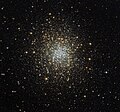Fil:Palomar 2 Hubble.jpg

Storlek på förhandsvisningen: 643 × 599 pixlar. Andra upplösningar: 257 × 240 pixlar | 515 × 480 pixlar | 824 × 768 pixlar | 1 098 × 1 024 pixlar | 2 197 × 2 048 pixlar | 4 146 × 3 865 pixlar.
Originalfil (4 146 × 3 865 pixlar, filstorlek: 10,9 Mbyte, MIME-typ: image/jpeg)
Filhistorik
Klicka på ett datum/klockslag för att se filen som den såg ut då.
| Datum/Tid | Miniatyrbild | Dimensioner | Användare | Kommentar | |
|---|---|---|---|---|---|
| nuvarande | 17 april 2013 kl. 10.38 |  | 4 146 × 3 865 (10,9 Mbyte) | Fabian RRRR | {{Information |Description='''Palomar 2 - A unique cluster: one of the hidden 15''' Globular clusters are relatively common in our sky, and generally look similar. However, this image, taken using the NASA/ESA Hubble Space Telescope, shows a unique ex... |
Filanvändning
Följande sida använder den här filen:
Global filanvändning
Följande andra wikier använder denna fil:
- Användande på ar.wikipedia.org
- Användande på ckb.wikipedia.org
- Användande på cs.wikipedia.org
- Användande på de.wikipedia.org
- Användande på el.wikipedia.org
- Användande på en.wikipedia.org
- Användande på fr.wikipedia.org
- Användande på lb.wikipedia.org
- Användande på pl.wikipedia.org
- Användande på pt.wikipedia.org
- Användande på ru.wikipedia.org
- Användande på tr.wikipedia.org
- Användande på www.wikidata.org

